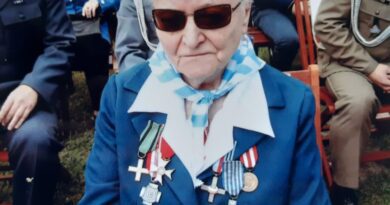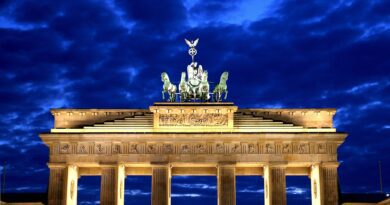A silenced national rebellion: the communists’ problem with the 1863 uprising

From the very beginning of their seizure of power in Poland, the Communists had a problem with the memory of the January Uprising of 1863-1864. Over the years, they reinterpreted it in such a way that it contained as little as possible descriptions and references to the struggle against Russia (identified by the public during the Polish People’s Republic with the USSR) and exaltations of the heroes of this national uprising.
The Communists, coming to power in 1944, knew perfectly well that they could not omit the January Uprising from their narrative, one of the most important national uprisings, constituting a kind of foundation of Polish patriotism. It was therefore necessary to adopt it as best as possible and show the public such themes that fit in with the rhetoric of the communists, and then gradually but effectively eliminate all mass celebrations.
Therefore, it is not surprising that one of the divisions of the People’s Army of Poland created from the USSR was named after Romuald Traugutt, as was one of the divisions of the Communist Partisan Group “Poland is not dead yet” (Jeszcze Polska nie zginęła), commanded by Robert Satanowski.
In January 1946, the operation to dissect the commemoration of the January Uprising had not yet gained its momentum, as 339 rallies were held across the country to commemorate it, as meticulously recorded by the Ministry of Information and Propaganda. As Marcin Zaremba wrote: “Never later in the history of the People’s Republic of Poland have so many events been held at one time to mark the anniversary of this very uprising.” Over time, the January Uprising disappears from the map of celebrations, becoming one of the uprisings against the Tsar, discussed in history lessons because of its progressive nature, the issue of peasant enfranchisement and the birth of the working class. Efforts were made to suggestively select the heroes of the uprising, fitting them into the portrait of a revolutionary-patriot. In practice, by the time the centennial of the uprising was celebrated, it had disappeared from the authorities’ attention.
Depreciate the bourgeoisie
Preparations for the celebrations were described by historian Tadeusz Paweł Rutkowski: “In 1958, the Scientific Committee for the Celebration of the Thousand-Year Anniversary of the Polish State was established, and within its framework, under the aegis of the Front for Unity of the Nation, a commission for the preparation of the celebration of the centennial of the January Uprising was appointed, headed by Professor Henryk Jablonski. Of the commission, only two historians were not members of the Polish United Workers’ Party [the communist party, Ed.], namely Stefan Kieniewicz and Stanislaw Herbst.” According to Marcin Zaremba, the preparations were carried out in the direction of depreciating the previous findings in historiography as completely false and bourgeois in nature. Facts and figures were selected, hitherto functioning myths were debunked, replacing them with new ones and in accordance with ideological requirements, the causes, course of the uprising and its effects were muddled up, in order to finally “achieve the effect of ‘losing track’ of the most important thing: against whom this uprising broke out.”
A propaganda campaign was implemented, the main elements of which were to emphasize the ties of People’s Republic of Poland with the national liberation struggle against the tsar and the partitioner, with the patriotic and progressive traditions of Polish history; to popularize knowledge of the insurgents’ militant collaboration with Russian, Ukrainian, and Belarusian democrats. It was pointed out that the uprising was supported by Karl Marx, Friedrich Engels, and the International Workingmen’s Association, which was to show the solidarity of the socialist labor movement with the national liberation struggle of Poles against the partitioners. Efforts were made to limit the number and massiveness of possible celebrations as much as possible, in fear of anti-Soviet speeches. In addition, as Zaremba points out, the publication of articles in the press about the uprising was banned until late autumn 1962, and all events with a local charter had to gain the countersignature of the provincial party committee and be approved by party headquarters. Schools were to be excluded from the celebration, where no commemorative ceremonies were to be allowed.
The previously mentioned Tadeusz Rutkowski described that, “on January 22nd, 1963, an exhibition was opened at the Warsaw Citadel, with the participation of state authorities, Polish United Worker’s Party Central Committee First Secretary Władysław Gomułka, State Council Chairman Aleksander Zawadzki, Prime Minister Józef Cyrankiewicz, and a representative of the Soviet embassy. The exhibition was prepared in such a way as to appropriate the uprising by the communist tradition, that is, to connect the insurgent movement with the movement of the late 19th century and lead in a logical sequence to the Communist Party of Poland, and at the same time to dilute the meaning of documents testifying to Russian terror.”
During the ceremony at the Citadel, the chairman of the State Council, Aleksander Zawadzki, said that the January Uprising was one of the progressive traditions in the history of Poland and Europe, paving the way for the birth of the “Polish working class movement,” which was the clue of the authorities’ narrative at the time. After the centennial celebrations, the authorities took care of the anniversary of Romuald Traugutt’s death in August 1964, laying flowers at the Execution Gate, and the graves at the Powązki cemetery were also cleaned up and cared for throughout Poland.
After Edward Gierek came to power in December 1970, the new First Secretary publicly announced a plan to rebuild the Royal Castle in Warsaw on the eve of the next anniversary of the January Uprising, on January 19th, 1971. The anniversary was “celebrated” differently in Szczecin. On that day, the Adolf Warski Shipyard once again declared an occupational strike and began a protest, which ended in a spectacular debate between Edward Gierek and the workers on the night of January 24-25 that year. In 1981, the Polish Archaeological and Numismatic Society issued a commemorative medal dedicated to the January Uprising.
The time after Solidarity
After the establishment of the Solidarity Trade Union in 1980, the anniversary of the January Uprising was not one of those gregariously celebrated by the opposition. Although many in the opposition had ancestors in their families who fought in it, Kornel Morawiecki, for example, is particularly worth mentioning.
In January 1981, another anniversary overlapped with a conflict over free Saturdays with the authorities, resulting in strikes and then more talks with the authorities. The low-key celebration of that year was organized in Warsaw. On the other hand, the Inter-Union Founding Committee in Piotrków Trybunalski demanded that the city authorities, “restore city rights to towns that had lost them as a result of repression after the January Uprising.”
At material commemorations of the January Uprising, demonstrations were held not only in January of a given year, but also ceremonies were held on the anniversaries of other important historical events. For example, in Radom, the anniversary of the tragic December 1970 was commemorated at the monument to Colonel Dionis Czachowski – the hero of the January Uprising. As the authors of the text on the Solidarity Trade Union of the Radom area wrote: “In this way it was suggested that the fight against Poland’s eternal enemy – then Russia, now the USSR – was not finished and that Poland remains under Soviet occupation.”
The January Uprising was also more widely recalled in June 1983, the pretext for which was the second pilgrimage of the Holy Father John Paul II to Poland. There, on June 22nd, 1983, in Krakow’s Błonie Park, the Pope beatified Rafał Kalinowski, a Discalced Carmelite, insurgent, and Siberian. Kornel Morawiecki wrote in the Lower Silesia Bulletin: “In front of millions of people who do not read underground newspapers, for whom the prospects were set by hard work, family, and DTV, new horizons suddenly opened up. We all heard that above the order and tranquility stood truth, freedom, and justice. The saints blessed here by the Pope – Adam Chmielowski and Rafał Kalinowski – in the name of ‘heroic love [for] the Fatherland’ lifted their weapons in the January Uprising and with Siberia and disability testified to the ‘love that gives its life for its friends.’”
Also used to evoke the uprising was the day of August 31st, 1983 in Gdansk, where after the end of the mass, former NCU president Zdzislaw Nowicki read a prayer from the January Uprising: “We forgive our enemies,” as recalled by historian Rev. Jarosław Wąsowicz.
In January 1989, in Poznan, at the Jesuit Church on the anniversary of the January national uprising, activists from the Confederation of Independent Poland and the Fighting Solidarity gave speeches and marched to City Hall. On the same day in Piotrkow Trybunalski, after Mass at the Jesuit monastery, a group of about 650 people marched to the local cemetery, where a commemorative obelisk of January insurgents was placed. As it was written in the report of the communist secret police, at the head of this march walked “Solidarity activists, who carried a banner ‘Solidarity Piotrków Trybunalski,’ an appeal was read at the cemetery concerning the insurgents, the Partitions, and September 17th, 1939.”
A eucharist dedicated to the heroes of 1863 was also held at St. John’s Cathedral on Świętojańska Street in Warsaw. After the mass, more than 200 people marched from under the cathedral through Castle Square and Krakowskie Przedmieście to Piłsudski Square, where wreaths were laid at the Tomb of the Unknown Soldier. The demonstration was organized mainly by activists of the Confederation of Independent Poland. On the eve of the anniversary of the January Uprising, on January 21st, 1989, so-called unknown perpetrators murdered Father Stefan Niedzielak, a determined preacher of the truth about the Katyn massacre.
The 1963 January Uprising was also an integral part of the second circulation, especially the so-called “camp mail.” They displayed the leaders of the January Uprising or blocks with a series of paintings by Artur Grottger. Undoubtedly, however, it was not held in such high esteem as, for example, the Warsaw Uprising, in honor of which thousands of stamps were issued.
The author is an employee of the Regional Historical Research Office of the Institute of National Rememberance in Szczecin
*Independent celebrations of Independence Day on November 11th, 1988 were organized in Kielce by the Working People’s Pastoral Care (Duszpasterstwo Ludzi Pracy). The celebration began at 4:15 pm at the cemeteries of legionaries, January insurgents, November insurgents, and participants in the 1920 Polish-Bolshevik war.
This article was published in January 2023 in “Do Rzeczy” weekly.



